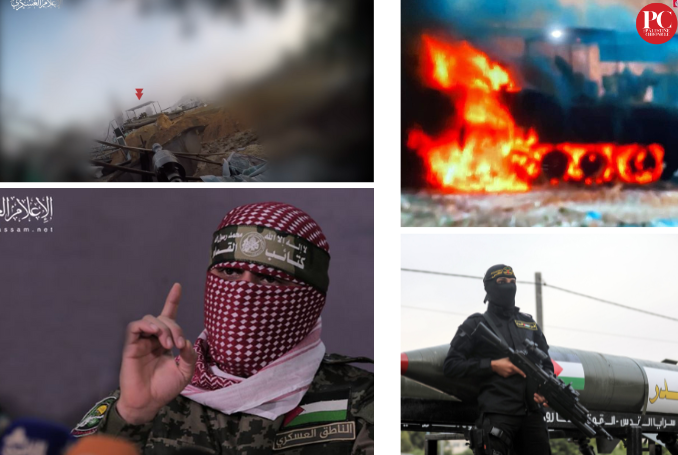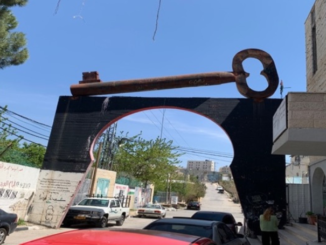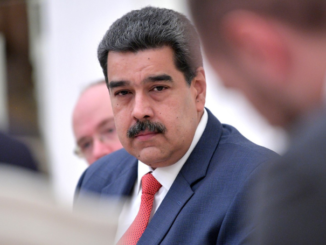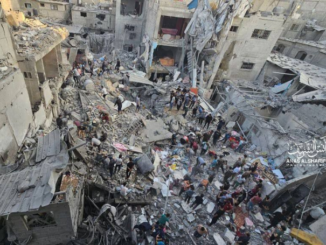
By Palestine Chronicle Editors
The Resistance must have learned from its experience of a two-month-long war against Israel, including over 40 days of street fighting.
As soon as the Israeli army began advancing into Gaza on October 27, as soon as it was met with stiff Palestinian resistance.
This resistance, however, seems to be getting stronger with time. But why is this the case?
For days before the land invasion, and starting on October 7, Israel began a process of systematic destruction of Gaza, resorting to the fire belts strategy – essentially burning everything on its way, and leveling numerous neighborhoods and residential squares to create a path for its future invasion.
The outcome was the killing of thousands of Palestinians and the kind of massacres unprecedented in the history of the Palestinian struggle against the Israeli occupation.
Entering Gaza, however, was no easy task. Dozens of tanks and other military vehicles were destroyed in the early days of the Israeli invasion.
🚨 ABU OBEIDA: Our fighters were able, in the past 72 hours, to completely or partially destroy 135 Israeli military vehicles.
FOLLOW OUR LIVE BLOG:https://t.co/GoWVyZkwem pic.twitter.com/wB7Gu7giZg
— The Palestine Chronicle (@PalestineChron) December 7, 2023
Israel must have anticipated this, as it has indeed prepared its public for difficult days ahead, per the words of various members of Israel’s War Council.
On November 8, these ‘difficult days’ seemed, more or less, over, when Israeli military spokesman Daniel Hagari declared “Hamas has lost control and is continuing to lose control in the north.”
This statement in particular was meant to highlight that Israel was ready for the next stage of its war: invading the south.
The reality on the ground, however, reflected either the Israeli military’s lack of awareness of the situation in northern Gaza, or the politicians’ rush to declare any kind of achievement, however superficial.
As soon as Israel began its ground operation in southern Gaza on December 4, Palestinian Resistance in the north emerged even stronger than the early days of the war.
The Israeli army announced the killing of three soldiers during clashes with the Palestinian Resistance in the besieged Gaza Strip.https://t.co/Yvkpirtncz pic.twitter.com/GxjWZ1Khtx
— The Palestine Chronicle (@PalestineChron) December 7, 2023
One reason behind this is the ceasefire, a brief humanitarian truce that allowed some badly needed aid to enter the Strip.
The aid was hardly enough to stave off mass starvation amid a genocidal war and the displacement of most of Gaza’s population. But it did, in fact, allow the Resistance to regroup and develop new strategies.
When Israel returned to war on December 1, it was obvious that a major retreat had taken place in northern Gaza. A top Al-Qassam Brigades official estimated, in an interview with Al-Jazeera, that nearly 70 percent of all Israeli forces were pulled back from northern Gaza.
He attributed this retreat to the strength of the Palestinian Resistance.
For Israel, that decision may have also been motivated by the belief that while the Resistance in northern Gaza may have not been fully eliminated, it must have surely grown weaker.
But in recent days, Israeli military analysts, journalists and some officials began to contend with the inescapable truth that northern Gaza has not fallen in the hands of the Israeli military.
Far from it. Not only is northern Gaza still fighting, but according to statements issued by Al-Qassam Brigades, the Resistance in Gaza, north and south, is stronger than ever before.
For example, Abu Obeida, the military spokesman for the Al-Qassam Brigades, has said that “in the last 72 hours, Al-Qassam fighters completely or partially destroyed 135 military vehicles in all fighting axes in the Gaza Strip.”
In a just-released video, Al Qassam Brigades members are seen destroying and burning several Israeli tanks at Al Shuja'iyeh neighborhood in eastern Gaza City. Several Israeli soldiers were reportedly burned and killed.
FOLLOW OUR LIVE BLOG:https://t.co/7Awyz1CXwY pic.twitter.com/4PSZvUMNgn
— The Palestine Chronicle (@PalestineChron) December 6, 2023
These military vehicles, and understandably a large number of Israeli soldiers, operating and manning them, have also been taken out in all areas of the Gaza Strip.
This includes the furthest northern point of Gaza, where the Israelis had entered in the first hours of the land invasion. These areas also include Shejaiya, east of Gaza City, which, too, was included in the supposedly conquered regions of the Strip.
The new ratio offered by Abu Obeida – nearly two Israeli military vehicles per hour – is the highest ratio of destruction inflicted upon the Israeli army within a three-day period since the start of the war.
But why is this the case?
First, the Resistance must have learned from its experience of a two-month-long war against Israel, including over 40 days of street fighting.
Second, that much time has also alerted the Resistance to the most and least effective ways of repelling Israeli advancements – not only in terms of weapons, but also military strategies and even the very temperament of the soldiers.
Third, the introduction of new kinds of weapons, including the Al-Ghoul sniper rifle, which has been developed by the Gaza Resistance itself and is used with high efficiency whenever Israeli troops dare to leave their fortified military vehicles.
Fourth, the psychological impact of the war. If Israel had assumed, in the early days of the war, that ethnic cleansing and genocide would eventually break the spirit of those fighting on the ground, it miscalculated.
🚨AL-QASSAM BRIGADES:
✅Our fighters were able to booby-trap and blow up a house in which a number of occupation soldiers were holed up with a barrel bomb in the axis east of the city of Khan Yunis in the southern Gaza Strip.
✅ Al-Qassam also announced that it had targeted -… pic.twitter.com/EmD8IAQxJg
— The Palestine Chronicle (@PalestineChron) December 6, 2023
Indeed, the high casualty among Palestinians – nearly 100,000 killed, wounded and remained missing since the start of the war – has given the Resistance a much higher cause to fight: to avenge their families and to protect those who remained alive.
And finally, by destroying large swathes of Gaza – nearly half of Gaza has been obliterated – the Israeli military strategy has indeed backfired. Palestinian fighters are finding it easier to detonate buildings where Israeli soldiers are taking shelter, to find hiding spots in the rubble, while still efficiently utilizing the countless local tunnels to strike and return to their positions safely.
Though Israeli military estimates suggest that Israel may need another month to conclude its most destructive war on the Gaza Strip, the Israeli army should expect even greater resistance over every inch of Gaza, from the furthest point south to the furthest point of the supposedly conquered north.
(The Palestine Chronicle)







